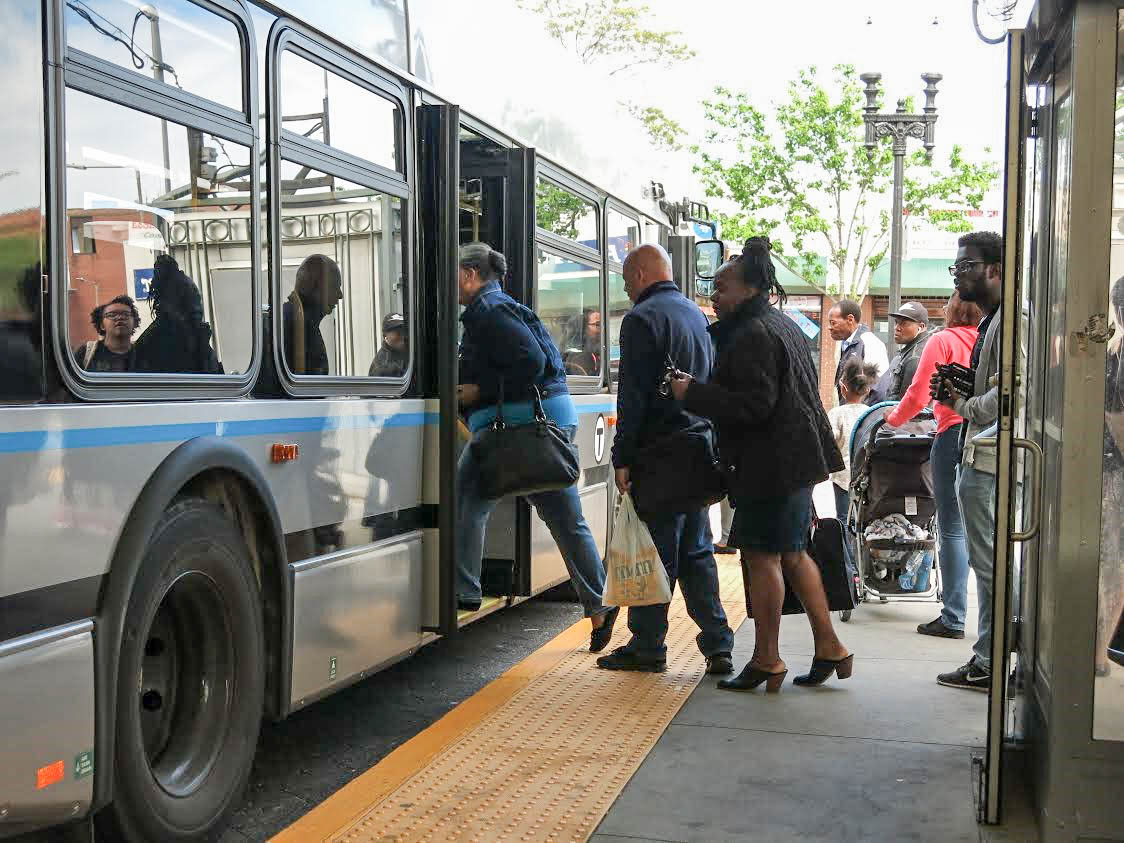Over two weeks this spring, bus riders on Boston's Silver Line got a glimpse of how much better service can be with all-door boarding.
The MBTA tested out all-door boarding on the two branches of the Silver Line that terminate at Dudley Square. It was the first in a series of demonstrations supported by the Barr Foundation in its BostonBRT initiative, which aims to accelerate implementation of best practices for fast, reliable bus service.
With all-door boarding, buses spent 30 percent less time stopped while passengers got off and on.
The initiative has helped persuade the MBTA to commit to systemwide all-door boarding by 2020, as part of its transition to a new fare payment platform.
For the two-week experiment, riders did not pay fares on the Silver Line's 4 and 5 branches. (The Barr Foundation covered the cost of foregone fare revenue.)
This footage from the Institute for Transportation and Development Policy shows the difference:
Riders noticed. The MBTA surveyed 900 riders, and 65 percent said their trip was faster thanks to all-door boarding. In the same survey, 70 percent said all-door boarding would make them more likely to ride the Silver Line again.
By speeding up trips, faster boarding could also enable running buses more frequently, meaning riders would spend less time waiting for the bus. "Bus schedules are determined based on the slowest trips," MBTA said in its press release. "Reducing the amount of time it takes for passengers to board on the slowest trips opens up possibilities for updating MBTA bus schedules to have buses arrive more frequently."
While all-door boarding is standard in other countries, it remains rare in the U.S. Only San Francisco has citywide all-door boarding, while others, like New York, use it on special bus lines where riders pay fares before boarding.
Andrew McFarland of Boston's Livable Streets Alliance, which worked with the Barr Foundation and MBTA on the pilot, said it "really helps show the potential" of all-door boarding.
"The Silver Line is a pretty high ridership bus corridor," McFarland said. "It’s got some elements of BRT to it, some signal priority and some bus only lanes. One of the huge sources of delay is definitely boarding times. Sometimes it can take two minutes for riders to board, especially high-capacity stops by an Orange Line station."
The MBTA recently issued an RFP to upgrade its fare collection system, and the agency promises that lining up to pay one-by-one at the front of the bus will be a thing of the past by 2020. The exact fare media has yet to be determined, but paying for the bus will be a cashless transaction.
The BostonBRT initiative, meanwhile, will continue to show the possibilities of bus service upgrades in more than 100 Boston-area municipalities served by the MBTA.
The next demonstration, for example, will bring bus-only lanes to Watertown, said McFarland. BostonBRT also plans to demonstrate features like like transit priority at traffic signals and raised bus stations for level boarding.
"The T owns the buses but they don’t own the signals or the streets that they operate on — same goes for the shelters," said McFarland. "It’s an opportunity to engage cities on this work."






